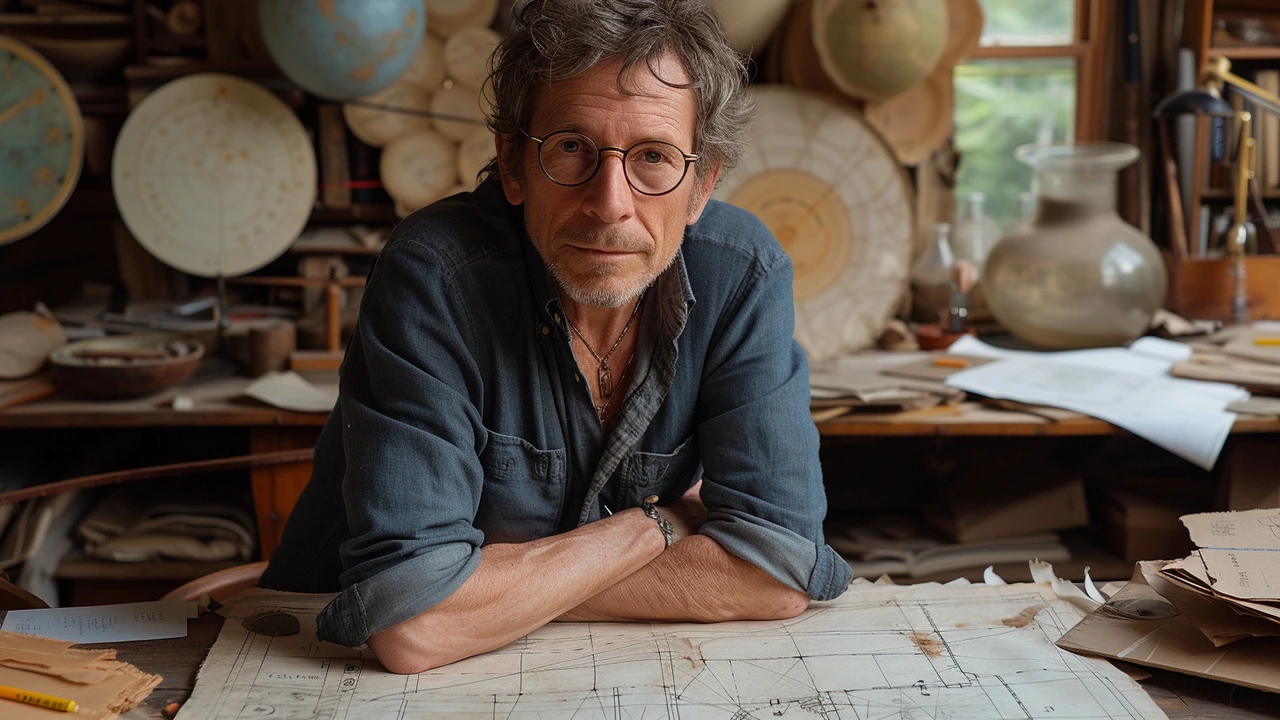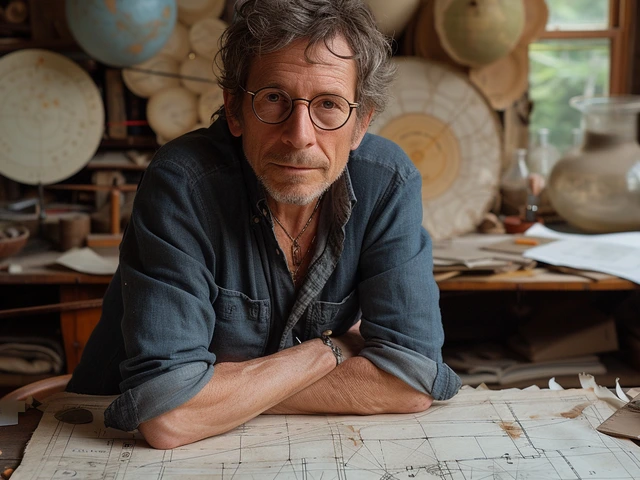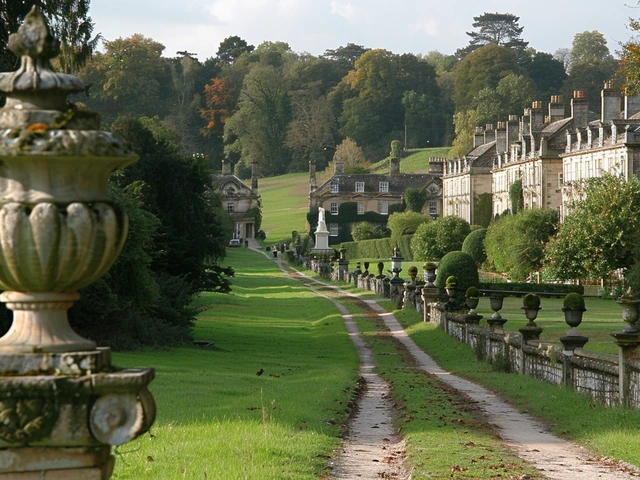The Genesis of Intertwined Creativity and New Ideologies
Once you step foot into the fascinating realm of history, it's hard not to stumble upon the rich, charismatic, and grand phase known as the Renaissance period. Now, I recognize you're not perched in some dusty library nor piercing through parchments of an age-old journal. This is Oliver, virtually guiding you through a time-travel adventure, off to the era of revolutionary transformation in the artistic world, with special emphasis on architecture. Who knows? By the end, we might be able to design our Rousseau-inspired villa!
The mesmerizing period of Renaissance, running from the 14th to the late 16th century, is famed for its profound shifts in societal, cultural, political, and most stirringly, artistic norms. As if you've ambled into a grand banquet, Architecture was the bow-tied master of ceremonies, introducing novel principles brought on by past Roman and Greek civilizations – captured neatly in the word 'Renaissance', meaning 'rebirth'.
Rediscovery – The architectural cornerstone of the Renaissance
Every rebirth story needs an initial plunge into the abyss, and the Renaissance's foray into the world of aesthetics was sparked by a seemingly bitter incident - the fall of Constantinople to the Ottoman Turks. Bail me out if this history gives you chills, but by revolutionary forces that threw the Greek scholars out of their Byzantine cocoon and into Western Europe.
With their suitcases, out came Classical Greek and Roman scrolls, theories, and exquisitely detailed architectural manuscripts that permeated the air of Europe. One could say that the Renaissance was born out of the suitcases of these Greek scholars. We could classify this moment as the 'suitcase epoch'—an amusing and effective way to recall how impactful the Byzantine refugees' influence was on the dawn of the architectural Renaissance!
Revolutionary Ideologies and Artistic Paradigms
Flooded with inspirations from Classical Antiquity, the Renaissance artists embarked upon a thrilling quest to innovate, drawing upon mathematical principles to shape their designs. Mathematics? Yup, you heard right—the same class that made us scratch our heads more often than not played a seminal role in designing grand architectural marvels. One thing's for sure - it's impossible to divorce Mathematics from Renaissance architecture!
Unlike the whimsical, intricate designs of the Gothic period that preceded it, Renaissance architecture celebrated symmetry, proportionality, and geometric harmony. Box-like buildings with symmetrical facades, harmoniously arranged windows and doors, spectacular domes flying higher than ever & Large public squares–Renaissance architecture paraded them in all their glory, lending a humanistic touch to its structures. That tells us, despite the possible migraines, Math does have an aesthetic side!
A Peek Into The Visionaries of The Renaissance
Every great movement has its mavericks, and Renaissance architecture was no exception. An elite trio of architectural maestros-Filippo Brunelleschi, Leon Battista Alberti, and Andrea Palladio sculpted the Renaissance era with their groundbreaking ideologies.
Brunelleschi, for instance, was a genius, as well as a keen observer of Roman ruins. It's amusing to imagine him, thumbing through old pages of Vitruvius' writings, an ancient Roman architect, indoors, while marveling at the Pantheon's dome, outdoors. But lo and behold! This laid the blueprint for Brunelleschi's creation—the Dome of Florence Cathedral, an architectural masterpiece defying gravity and critics, and arguably the linchpin of Renaissance architecture. Even today, looking at the spectacular terracotta dome, one can't help but affirm, 'The rebirth began here'.
The Architectural Child of Mathematical Parentage
As we dove further into the creative minds of these architects, I couldn’t help but think back to my high school maths classes. If only I knew that ratios and proportions were the secret sauces behind some of the most beautiful edifices in history, would my mathematical affection have blossomed earlier?
Alberti suggested that buildings are a solid form of music, and this is no far-fetched analogy. Just like harmonies and melodies blend naturally in a beautifully composed song, so do the parts of a Renaissance building, tuning into each other with mathematical precision. His most exemplary creation, the Palazzo Rucellai, resembles a coherent music piece, with each floor following a rhythmic pattern. Perhaps, architecture and music weren't such distant cousins, after all!
The Transition Towards The High Renaissance
The stakes were high, literally, as Renaissance transitioned into the Early and High Renaissance. The architectural landscape was increasingly dominated by gravity-defying domes and towering basilicas, and the heart of it all? Rome! My little escapade to Rome was indeed filled with neck-craning glances at every architectural marvel in sight.
The High Renaissance saw the zenith of harmonious design principles visually encapsulated by Donato Bramante's Tempietto. Taking inspiration from the classic Roman circular temple form, 'Tempietto' which means 'little temple', is a wonderful testament to the use of symmetry and proportions. Not to forget, Michelangelo and Raphael, all-star mavericks, making their timeless marks in this era, and further broadening the ever-evolving Renaissance architectural horizon!
Echoes of the Renaissance Era in Today’s Architectural Landscape
Perhaps you've coveted the charming prospect of having a Renaissance-inspired pavilion in your own backyard or maybe a full-scale version of Palladio's Villa Capra 'La Rotonda'! (without breaking several laws, of course). The wonder of the Renaissance period, although centuries back, still pulses lively in our modern architectural veins.
My trip to Washington D.C., for instance, was like a pop quiz of recognizing bits and specks of Renaissance influence. The neoclassical architectural style of the iconic White House borrows heavily from Renaissance principles—symmetrical façades, evenly spaced windows, large public spaces—old school cool, indeed!
In conclusion, the Renaissance period has impressively cemented its legacy in the architectural world. Its marriage with mathematical precision, and an aesthetic predilection towards harmony and proportion has rendered it timeless in its appeal. While its architectural essence continues to thrive in countless modern buildings, its inspiring genesis of intertwined creativity and ideology will forever remain a beacon for future art epochs. So, here's celebrating the artistic beauty of Renaissance architecture—over a century and counting!





Leave a Comments